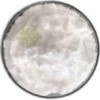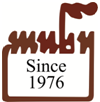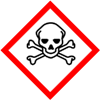5-Hydroxy-l-tryptophan Pure and USP Grade Manufacturers, with SDS GHS MSDS Sheet |
Supplier, Manufacturer, Exporter of 5-Hydroxy-l-tryptophan Pure and USP Grade, Muby Chemicals of Mubychem Group, established in 1976, is the original manufacturers of Specialty Chemicals, Pharmaceutical Excipient, Fragrance Food & Flavor chemicals, Reagent Grade Chemicals, Shale Gas Fracturing Chemicals in India. Mubychem Group has several manufacturing facilities spread across Western India and world wide contacts and toll manufacturers. We are exporting globally to countries like USA, Canada, Europe, UAE, South Africa, Tanzania, Kenya, Egypt, Nigeria, Cameroon, Uganda, Turkey, Mexico, Brazil, Chile, Argentina, Dubai, Korea, Vietnam, Thailand, Malaysia, Indonesia, Australia, China, Germany, France, Italy Portugal, Bangladesh, etc. The products are offered as per required specifications and in correct shape and size in mm or meshs or microns as specified by the buyer. The participating units have one or more accreditations like FDA - cGMP and GLP approval, ISO-9001 Certified, "REACH" Registered, ISO-14001, ISO/IEC 17025, ISO-22000, FSSC 22000, ISO 45001, Kosher Certified, Halal Certified, HACCP, FSSAI. We offer Commercial Pure & IP BP EP Ph Eur USP NF JP FCC Food Grade Analytical Reagent Grades of Chemicals |
| Bookmark this Web Site -- or --Email This Page Info to a Colleague or Yourself |
Search our website here:







5-Hydroxy-l-tryptophan CAS Number 4350-09-8, EINECS EC Number: 224-411-1, Molecular Formula: C11H12N2O3, Molecular Weight: 220.23, HS Code 29339980 or 29339990 or 29224990
How big is your requirement or how small
We serve it all.
Specifications, Safety Data Sheet, Manufacturing process details, Wholesale retail buy sell prices, Uses etc available on line in these pages for 5-Hydroxy-l-tryptophan.
For SDS MSDS Sheet Click
SDS MSDS Sheet of 5-Hydroxy-l-tryptophan Manufacturers
5-Hydroxy-l-tryptophan
Pure and USP Grade Suppliers

5-Hydroxy-l-tryptophan is an organic compound. It is commonly used in the pharmaceutical industries.
5-Hydroxy-l-tryptophan USP Dietary Supplement Grade:
C11H12N2O3 220.23
(S)-2-Amino-3-(5-hydroxy-1H -indol-3-yl)propanoic acid CAS 4350-09-8.
UNII: C1LJO185Q9
DEFINITION
5-Hydroxy-l-tryptophan contains NLT 98.5% and NMT 101.5% of 5-hydroxy-l-tryptophan (C11H12N2O3), calculated on the dried basis.
IDENTIFICATION
A. Infrared Absorption
Assay: 98.5% to 101.5% on dried basis.
Residue on Ignition: NMT 0.2%
Chloride and Sulfate, Chloride: NMT 0.05%
Chloride and Sulfate, Sulfate: NMT 0.03%
Total organic impurities 1: NMT 0.01% of the total impurities eluting prior to the 5-hydroxy-l-tryptophan peak.
Total organic impurities 2: NMT 0.03% of the total impurities eluting after the 5-hydroxy-l-tryptophan peak. [Note— Exclude the peak for tryptophan.]
Tryptophan: NMT 0.5%
Optical Rotation, Specific Rotation:
Sample solution: 10 mg/mL in water
Acceptance criteria: −30.0° to −38.0°
pH:
Sample solution: 10 mg/mL in water
Acceptance criteria: 4.0–6.0
Loss on Drying at 105° for 3 h:
Acceptance criteria: NMT 2.0%
Packaging and Storage: Preserve in well-closed containers. Preferably store at 5C to 8C. Short term storage may be at room temperature.
For Original Monographs of IP Indian Pharmacopoeia EP Ph Eur European Pharmacopoeia BP British Pharmacopoeia USP US Pharmacopoeia FCC Food Grade product, please check with the respective web-pages or books.
We also manufacture and supply as under:
Manufacturers:
Manufacturers:
MUBY CHEMICALS
Ambernath Mumbai, Ankleshwar Gujarat, India
TEL: (OFFICE) +912223770100, +912223726950
Current Date Time in India GMT+5:30
e-mail: info@mubychem.com
USA, Canada, Mexico and other American neighbouring buyers may
e-mail: us@mubychem.com
Call toll-free 1-877-682-9243 (1-877-MUBYCHEM)

Copyright and Usual Disclaimer is Applicable.
Last 20 August, 2025




Exporters to USA Canada UAE Europe South Africa Tanzania Kenya Uganda Egypt Nigeria Turkey Mexico Brazil Argentina Chile Dubai etc.
Global or International Suppliers, Exporters, Importers, Manufacturers
I shall pass through this world, but once. If therefore, there is any good that I can do, or if there is any favor that I can show to a fellow human being, let me do it now. Let me not defer or neglect it. For I shall not tread this way again
5-Hydroxy-l-tryptophan SDS, Safety Data Sheet
MSDS Sheet, Material Safety Data Sheet 20-Aug-25
1. Product Identification
Product Name & Other Names: 5-Hydroxy-l-tryptophan.
CAS No.: 4350-09-8
EINECS EC Code: 224-411-1
Molecular Weight: 220.23
Molecular Formula: C11H12N2O3
Relevant uses and uses advised against (if any): Industrial Manufacturing.
Suppliers: As per letterhead.
2. Hazards Identification
GHS, Globally Harmonized System Classification in accordance with 29 CFR 1910
Classification according to Regulation (EC) No 1272/2008
Acute toxicity, Oral (Category 3) H301
Labeling according to GHS USA & Regulation (EC) No 1272/2008
GHS Label Elements  Toxic |
Signal Word: Danger
Hazard Statements:
H301: Toxic if swallowed
Precautionary Statements
P260: Do not breathe dust/fume/gas/mist/vapors/spray.
P264: Wash ... thoroughly after handling.
P270: Do not eat, drink or smoke when using this product.
P271: Use only outdoors or in a well-ventilated area.
P280-Wear protective gloves/protective clothing/eye protection/face protection.
P284 Wear respiratory protection.
P301+P310+330: IF SWALLOWED: Rinse mouth and immediately call a POISON CENTER or doctor/physician.
P302+P352: IF ON SKIN: Wash with soap and water.
P304+P340: IF INHALED: Remove victim to fresh air and keep at rest in a position comfortable for breathing.
P305+P351+P338: IF IN EYES: Rinse cautiously with water for several minutes. Remove contact lenses, if present and easy to do. Continue rinsing.
P405: Store locked up.
Classification according to EU Directives 67/548/EEC or 1999/45/EC:
Hazard Symbol:
T Toxic
Risk Phrase:
R25 Toxic if swallowed.
3. Composition/Information on Ingredients
Product Name & Other Names: Adiponitrile or Adipic acid dinitrile or Adipyldinitrile.
CAS No.: 111-69-3
EINECS EC Code: 203-896-3
4. First Aid Measures
Always seek medical attention after first aid measures are provided.
Inhalation: If inhaled, it may cause irritation and damage to nose, throat, and respiratory system. Remove the victim to fresh air. If not breathing, give artificial respiration. If breathing is difficult, give oxygen. Get medical attention.
Ingestion: It will cause irritation to mouth, digestive tract and stomach. Contact medical center quickly. Never give anything by mouth to an unconscious person. Get medical attention.
Skin Contact: On contact, it may be harmful. Immediately flush skin with plenty of water for at least 15 minutes. Remove contaminated clothing and shoes. Get medical attention. Wash clothing before reuse. Thoroughly clean shoes before reuse.
Eye Contact: It may cause severe irritation to eyes. Check for and remove any contact lenses. Immediately flush your eyes with running water for at least 15 minutes, keeping eyelids open. Cold water may be used. Get medical attention.
Notes to Physician: Treat symptomatically.
5. Fire Fighting Measures
Fire: Flash point: 93C.
Toxic fumes, carbon dioxide, carbon monoxide and nitrogen oxides may be formed in fire.
Explosion: Not known.
Fire Extinguishing Media: Dry chemical, foam or carbon dioxide and water spray jet. Avoid solid streams of water.
Special Information: In the event of a fire, wear full protective clothing and NIOSH-approved self-contained breathing apparatus with full face piece operated in the pressure demand or other positive pressure mode. Fire-extinguishing work is done from the windward and a suitable fire-extinguishing method according to the surrounding situation is used. Uninvolved persons should evacuate to a safe place. In case of fire in the surroundings: Keep containers cool by spraying them with water. Eliminate all ignition sources if safe to do so.
6. Accidental Release Measures
Personal precautions, protective equipment, and emergency procedures: Avoid breathing dust/fumes/gas/mist/vapors/spray. Use individual protective equipment (waterproof boots, suitable protective clothing, safety glasses, etc.). Restrict unprotected personnel from the area. Prevent any contact with hot surfaces. Do not approach facing the wind. Do not touch the spilled material.
Environmental precautions: Do not let the product enter drains, soil, or water sources.
Methods and materials used for containment cleanup procedures and Storage:
Small Spill: Mop and pick up the material and place in an appropriate waste disposal container. Finish cleaning by spreading water on the contaminated surface and dispose of according to local and regional authority requirements.
Large Spill: Do not inhale dust, vapors, mist, or gas. Avoid dust formation. Contain spilled material. Cover with an inert, non-combustible absorbent material, (e.g., sand, earth, diatomaceous earth, vermiculite). Use a shovel to put the material into a convenient waste disposal container. Finish cleaning by spreading water on the contaminated surface and allow to evacuate as per law.
7. Handling and Storage
Precautions for safe handling: Apply according to good manufacturing and industrial hygiene practices. Ensure proper ventilation. In case of insufficient ventilation, wear suitable respiratory equipment. Wash thoroughly after handling. Do not drink, eat, or smoke while handling. Avoid contact with skin, eyes, and clothing. Minimize dust generation. Avoid breathing dust/fumes/gas/mist/vapors/spray. Keep container tightly closed. Avoid ngestion and inhalation. Use individual protective equipment (waterproof boots, suitable protective clothing, safety glasses, etc.). Prevent any contact with hot surfaces.
Conditions for safe storage, including any incompatibilities: Store in cool, dry, and ventilated area away from heat sources and protected from sunlight in tightly closed original container. Keep air contact to a minimum. Store protected from heat, sparks and ignition sources and incompatible materials. Avoid contact with skin and eyes. Avoid inhalation of dust/mist/vapor. Do not store with incompatible materials like strong oxidizing agents. Preferably store at 5C to 8C. Short term storage may be at room temperature.
8. Exposure Controls/Personal Protection
Airborne Exposure Limits: Contains no substances with occupational exposure limit values.
Ventilation System: A system of local and/or general exhaust is recommended to keep employee exposures as low as possible. Local exhaust ventilation is preferred because it can control the emissions of the contaminant at its source, preventing dispersion of it into the general work area. Please refer to the ACGIH document, Industrial Ventilation, A Manual of Recommended Practices, most recent edition, for details.
Personal Respirators (NIOSH Approved): For conditions of use where exposure to the substance is apparent and engineering controls are not feasible, consult an industrial hygienist. For emergencies, or instances where the exposure levels are not known, use a full-face piece positive-pressure, air-supplied respirator. WARNING: Air purifying respirators do not protect workers in oxygen-deficient atmospheres.
Skin Protection: Wear impervious protective clothing, including boots, gloves, lab coat, apron or coveralls, as appropriate, to prevent skin contact.
Eye Protection: Use chemical safety goggles and/or a full-face shield where splashing is possible. Maintain eye wash fountain and quick-drench facilities in work area.
Other Control Measures: Maintain good housekeeping in work area. Handle in accordance with good industrial hygiene and safety practice. Wash hands after handling.
9. Physical and Chemical Properties
Appearance: It occurs as an off-white fine powder.
Odor: Not available.
Odor threshold: Not available.
pH: Not available.
Relative density: about 0.96
Boiling Point: Not available.
Melting Point: Not available.
Flash point: Not available.
Auto-ignition temperature: Not available.
Decomposition temperature: Not available.
Upper/lower flammability or explosive limits: Not available.
Vapor pressure: Not available.
Vapor density: Not available.
Evaporation rate: Not available.
Flammability (solid, gas): Not available.
Partition coefficient: n-octanol/water: Not available.
Solubility: Not available.
Viscosity: Not available.
Molecular Weight: 220.23
Molecular Formula: C11H12N2O3
10. Stability and Reactivity
Stability: Stable under ordinary conditions of use and storage. Forms explosive mixtures with air on intense heating.
Hazardous Decomposition Products: Carbon dioxide, carbon monoxide, nitrogen oxides, and toxic fumes may form when heated to decomposition.
Hazardous Polymerization: Not reported.
Incompatibilities: Strong oxidizing, heat and sparks.
Conditions to Avoid: Sunlight, heat, flames, ignition sources and incompatibles.
11. Toxicological Information
LD50 Oral - Rat - 243 mg/kg.
Carcinogenicity: No component of this product present at levels greater than or equal to 0.1% is identified as probable, possible or confirmed human carcinogen by IARC, ACGIH, OSHA & NTP.
Mutagenic Effects: No information available
Reproductive Effects: No information available.
Developmental Effects: No information available.
Teratogenicity: No information available.
12. Ecological Information
Toxic to fish: static test LC50 - Oncorhynchus mykiss (rainbow trout) - 670 mg/l - 96 h.
Persistence and Degradability: Soluble in water Persistence is unlikely based on information available.
Bioaccumulation/ Accumulation: No information available.
Mobility: Will likely be mobile in the environment due to its water solubility.
13. Disposal Considerations
Whatever cannot be saved for recovery or recycling should be managed in an appropriate and approved waste disposal facility. Processing use or contamination of this product may change the waste management options. State and local disposal regulations may differ from federal disposal regulations. Dispose of containers and unused contents in accordance with federal, state, and local requirements.
14. Transport Information
DOT USA & ADR/RID Europe
UN Number: 2811
Proper shipping name: Toxic solid, organic, n.o.s.
Class: 6.1, Packing group: III.
IMDG & IATA
UN Number: 2205
Proper shipping name: Adiponitrile
Class: 6.1, Packing group: III.
15. Regulatory Information
USA:
SARA 311/312: Acute & Chronic.
California Prop 65: No Significant Risk Level: None of the chemicals in this product are listed.
Section 16 - Additional Information
European Labeling in Accordance with EC Directives:
H301: Toxic if swallowed.
Classification according to EU Directives 67/548/EEC or 1999/45/EC:
Hazard Symbol:
T Toxic
Risk Phrase:
R25 Toxic if swallowed.
Disclaimer:
**************************
Our company provides this MSDS sheet in good faith but makes no representation as to its comprehensiveness or accuracy. This SDS sheet is intended only as a guide to the appropriate precautionary handling of the material by a properly trained person using this product. The above information has been compiled from various sources and has the possibility of discrepancy and being out-dated information. Individuals receiving the information must exercise their independent judgment and do further search in determining its appropriateness for a particular purpose. In no case shall our company be liable to loss or damages by the product user.
**************************















